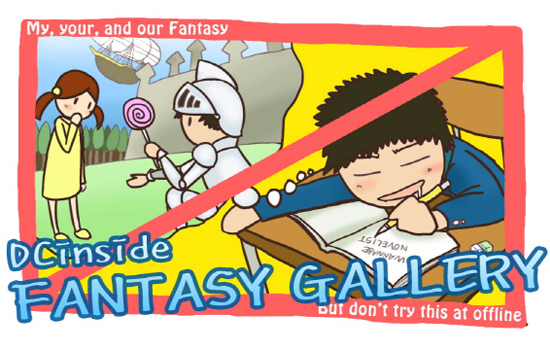다니엘 네틀의 "강렬한 상상력: 광기, 창의성, 그리고 인간 본성" 요약 (영문 요약 번역)
다니엘 네틀의 강렬한 상상력: 광기, 창의성, 그리고 인간 본성은 정신 질환과 인간 창의성 사이의 복잡한 관계를 생물학적, 심리학적, 그리고 진화론적 관점에서 탐구합니다. 이 책은 창의성을 가능하게 하는 동일한 인지 메커니즘이 정신병적 경향을 유발하며, 이러한 이중성을 인간 본성의 근본적인 측면으로 간주합니다. 다음은 주요 주제와 주장을 구조화하여 정리한 내용입니다.
기본 개념
1. 정신 질환의 생물학적 및 심리학적 기반
네틀은 유전적, 환경적, 사회적 요인의 영향을 받는 뇌 기능 장애로서 조현병 및 정동 장애(예: 우울증, 양극성 장애)를 살펴봅니다. 그는 현대 유전학적 통찰력을 강조하면서 반정신의학 운동을 포함한 역사적 정신 의학적 접근 방식을 비판합니다[1][2]. 정신 질환이 진화적으로 지속되는 이유는 발산적 사고와 관련된 성격 차원인 **정신병질(psychoticism)**과 같은 특성이 적당한 수준에서 적응적 이점을 제공하기 때문입니다[1][3].
2. 정신병질 vs. 정신병
정신병질: 창의성을 향상시키는 유전 가능한 특성으로, 인지적 유연성과 새로운 아이디어에 대한 개방성을 특징으로 합니다. 이는 스펙트럼으로 존재하며, 가벼운 형태는 예술적 또는 지적 혁신을 촉진합니다[1][3].
정신병: 혼란스러운 사고, 환각 및 손상된 현실 검증으로 특징지어지는 병리학적 상태입니다. 네틀은 이를 생산적인 창의성과 구별하며, 심각한 정신병은 기능성을 저해한다고 지적합니다[1][2].
진화론적 관점
1. 성 선택과 창의성
제프리 밀러의 이론에 근거하여 네틀은 창의성이 공작의 꼬리와 유사한 "적합성 신호"로 진화했다고 주장합니다. 예술적 또는 지적 성과는 유전적 품질을 광고하여 사회적 지위와 생식 성공을 향상시킵니다. 이는 창의성의 생존에 중립적이거나 심지어 비용이 많이 드는 본질에도 불구하고 그 보편성을 설명합니다[1][2].
2. 유전적-창의성 트레이드 오프
정신병질과 관련된 유전자는 창의성을 촉진하지만, 과도한 활성화는 정신 질환의 위험을 초래합니다. 네틀은 이러한 균형이 정신 질환이 지속되는 이유를 설명한다고 제안합니다. 즉, 정신 질환은 인간 혁신을 주도하는 특성의 불가피한 부산물이라는 것입니다[1][3].
실제 창의성
1. 창의적인 직업의 취약성
개방형 자기 성찰을 필요로 하는 분야(예: 시, 순수 수학, 음악 작곡)는 우울증 및 정신병의 발병률이 더 높습니다. 고독한 작업은 이 위험을 악화시키는데, 창작자는 종종 자신의 생각을 뒷받침할 사회적 피드백이 부족하기 때문입니다[2][3]. 네틀은 이를 구조화된 문제 해결이 취약성을 줄이는 협력 과학(예: 화학)과 대조합니다[2].
2. 창의적인 과정
성공적인 창의성은 두 단계로 구성됩니다.
발산적 사고: 가벼운 정신병 상태와 유사한 유연한 아이디어 생성.
수렴적 실행: 훈련된 정제 및 구현.
네틀은 두 단계를 모두 숙달한 개인이 정신병으로 빠져드는 것을 피한다고 주장합니다[2].
사례 연구 및 문화적 맥락
미스터 매튜스: 그의 환각이 빅토리아 시대의 기술적 환상을 반영한 19세기 남성을 통해, 문화적 맥락이 정신병적 경험을 어떻게 형성하는지 보여줍니다[2].
역사적 인물: 모차르트, 슈만, 셰익스피어에 대한 언급은 다작 창작자가 종종 내면의 혼란을 산출물로 전환하여 창의성과 불안정을 균형 있게 유지하는 방법을 강조합니다[2][3].
실질적인 함의
치료: 네틀은 정신병의 파괴적인 영향을 완화하면서 가벼운 정신병질의 창의적인 이점을 보존하기 위해 적극적인 치료를 옹호합니다[1][3].
예방: 유전적 소인이 있는 개인은 정신 건강을 안정시키기 위해 구조화된 환경과 사회적 연결을 육성해야 합니다[1][2].
비판 및 미해결 질문
네틀이 정신병에 초점을 맞추는 동안 리뷰어들은 자폐증, 강박 장애(OCD)와 같은 다른 상태가 그의 창의성 프레임워크에 없다는 점에 주목합니다[1][3]. 또한 광기가 창의성의 "대가"라는 그의 진화론적 주장은 비창의적인 정신과적 특성이 지속되는 이유에 대한 질문을 제기합니다[1][3].
네틀은 창의성과 광기가 인간 인지의 동전의 양면이라고 주장하기 위해 이질적인 분야를 종합합니다. 이 책은 독자들에게 정신 질환을 결함이 아닌 우리 종을 정의하는 상상력의 역설적인 결과로 재해석하도록 도전합니다.
Daniel Nettle's *Strong Imagination: Madness, Creativity, and Human Nature* explores the intricate relationship between mental illness and human creativity through biological, psychological, and evolutionary lenses. The book argues that the same cognitive mechanisms enabling creativity also predispose individuals to psychosis, framing this duality as a fundamental aspect of human nature. Below is a structured overview of its key themes and arguments:
---
### **Foundational Concepts**
**1. Biological and Psychological Basis of Mental Illness**
Nettle examines schizophrenia and affective disorders (e.g., depression, bipolar disorder) as disruptions in brain function influenced by genetics, environment, and social factors. He critiques historical psychiatric approaches, including the antipsychiatry movement, while emphasizing modern genetic insights[1][2]. Mental illnesses persist evolutionarily because traits like **psychoticism**—a personality dimension linked to divergent thinking—confer adaptive advantages in moderation[1][3].
**2. Psychoticism vs. Psychosis**
- **Psychoticism**: A heritable trait enhancing creativity, characterized by cognitive flexibility and openness to novel ideas. It exists on a spectrum, with mild forms fostering artistic or intellectual innovation[1][3].
- **Psychosis**: A pathological state marked by disorganized thought, hallucinations, and impaired reality testing. Nettle distinguishes this from productive creativity, noting that severe psychosis erodes functionality[1][2].
---
### **Evolutionary Perspectives**
**1. Sexual Selection and Creativity**
Drawing from Geoffrey Miller’s theory, Nettle posits that creativity evolved as a "fitness signal" akin to a peacock’s tail. Artistic or intellectual achievements advertise genetic quality, enhancing social status and reproductive success. This explains creativity’s prevalence despite its survival-neutral (or even costly) nature[1][2].
**2. The Genetic-Creativity Trade-off**
While genes associated with psychoticism promote creativity, their overactivation risks mental illness. Nettle suggests this balance explains why mental disorders persist: they are an unavoidable byproduct of traits that drive human innovation[1][3].
---
### **Creativity in Practice**
**1. Vulnerability in Creative Professions**
Fields requiring open-ended introspection (e.g., poetry, pure mathematics, music composition) correlate with higher rates of depression and psychosis. Solitary work exacerbates this risk, as creators often lack social feedback to ground their thoughts[2][3]. Nettle contrasts this with collaborative sciences (e.g., chemistry), where structured problem-solving reduces vulnerability[2].
**2. The Creative Process**
Successful creativity involves two phases:
- **Divergent Thinking**: Fluid idea generation, akin to mild psychotic states.
- **Convergent Execution**: Disciplined refinement and implementation.
Nettle argues that individuals who master both phases avoid descending into psychosis[2].
---
### **Case Studies and Cultural Context**
- **Mr. Matthews**: A 19th-century man whose hallucinations mirrored Victorian technological fantasies, illustrating how cultural context shapes psychotic experiences[2].
- **Historical Figures**: References to Mozart, Schumann, and Shakespeare highlight how prolific creators often channel inner turmoil into output, balancing creativity and instability[2][3].
---
### **Practical Implications**
- **Treatment**: Nettle advocates for aggressive treatment of psychosis to mitigate its destructive effects, while preserving mild psychoticism’s creative benefits[1][3].
- **Prophylaxis**: Individuals with genetic predispositions should cultivate structured environments and social connections to stabilize their mental health[1][2].
---
### **Critiques and Unanswered Questions**
While Nettle focuses on psychosis, reviewers note the absence of other conditions (e.g., autism, OCD) in his creativity framework[1][3]. Additionally, his evolutionary argument—that madness is a "price" for creativity—raises questions about why non-creative psychiatric traits persist[1][3].
---
Nettle synthesizes disparate fields to argue that creativity and madness are two sides of humanity’s cognitive coin. The book challenges readers to reimagine mental illness not as a defect but as a paradoxical consequence of the imagination that defines our species.
Citations:
[1] https://pmc.ncbi.nlm.nih.gov/articles/PMC1120691/
[2] https://www.hgi.org.uk/resources/delve-our-extensive-library/interviews/madness-creativity-and-human-nature
[3] https://www.goodreads.com/book/show/1566032.Strong_Imagination
[4] https://books.google.com/books/about/Strong_Imagination.html?id=Eizo9G-2XgYC
[5] https://www.goodreads.com/book/show/127815527
[6] https://www.abebooks.com/9780198507062/Strong-Imagination-Madness-Creativity-Human-0198507062/plp
[7] https://www.worldofbooks.com/en-gb/products/strong-imagination-book-daniel-nettle-9780198605003
[8] https://archive.org/details/strongimaginatio0000nett
[9] https://www.researchgate.net/publication/375347885_Strong_Imagination_Madness_Creativity_and_Human_Nature
🔟 https://www.indigo.ca/en-ca/strong-imagination-madness-creativity-and-human-nature/9780198605003.html
[11] https://product.kyobobook.co.kr/detail/S000214881657
[12] https://global.oup.com/academic/product/strong-imagination-9780198507062
[13] https://www.barnesandnoble.com/w/strong-imagination-daniel-nettle/1101398248
[14] https://www.researchgate.net/publication/250953698_Book_Strong_Imagination_Madness_Creativity_and_Human_Nature
[15] https://www.abebooks.co.uk/9780198605003/Strong-Imagination-Madness-Creativity-Human-0198605005/plp











댓글 영역
획득법
① NFT 발행
작성한 게시물을 NFT로 발행하면 일주일 동안 사용할 수 있습니다. (최초 1회)
② NFT 구매
다른 이용자의 NFT를 구매하면 한 달 동안 사용할 수 있습니다. (구매 시마다 갱신)
사용법
디시콘에서지갑연결시 바로 사용 가능합니다.